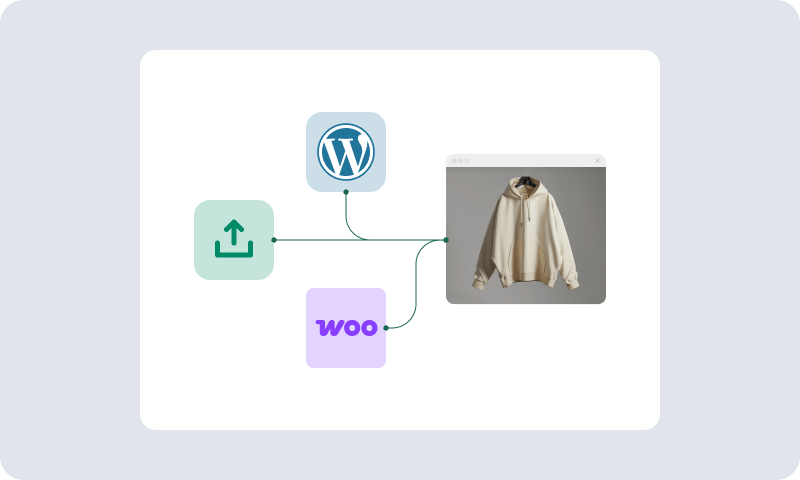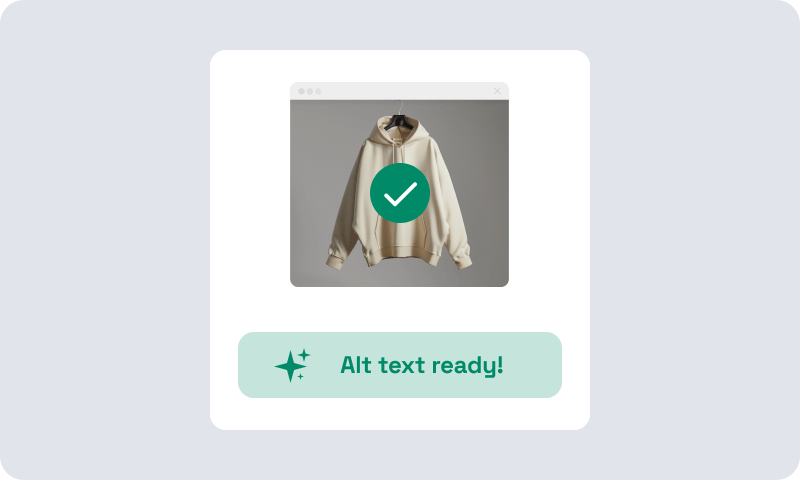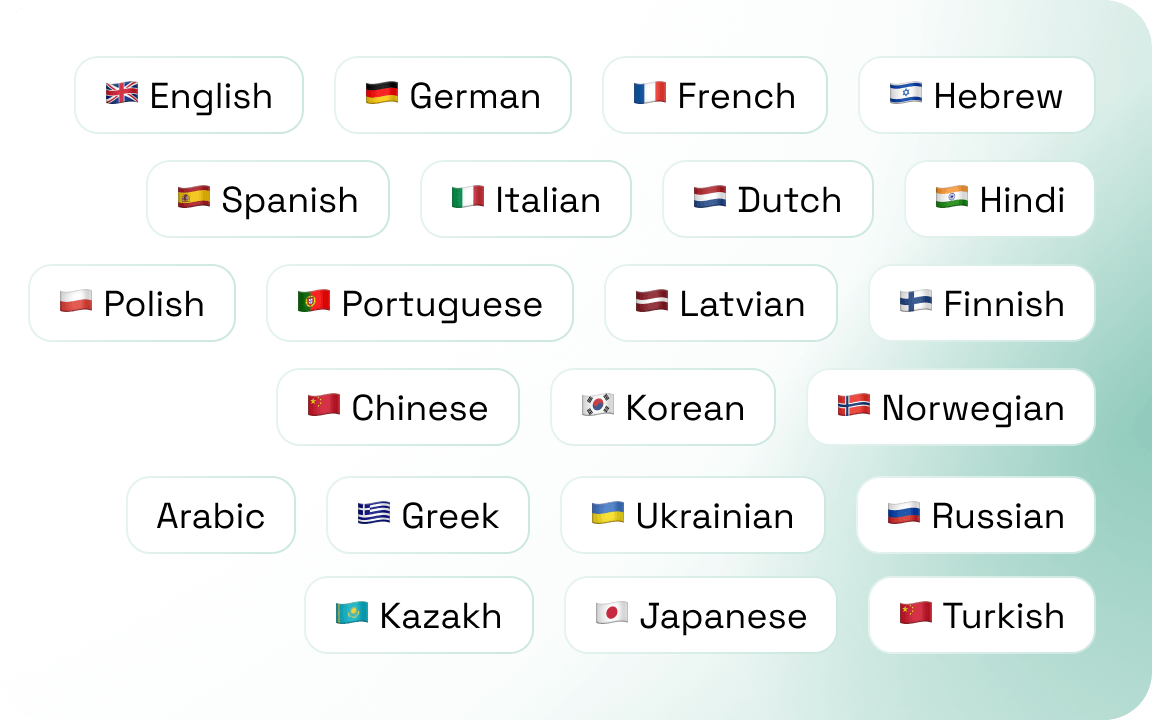AI alt text generator for images
Generate high-quality, compliant alt text for images in seconds – accessible content that ranks better, automatically.
Get started for freeUsed by teams worldwide







Generate image alt text in seconds







Let our AI engine write your alt tags
How our alternative text generator works

1. Upload your image

2. AI reads the image

3. Get your alt text

Global language coverage
What our users say












FAQ
Create, scale, and optimize your image accessibility.
How do I automatically generate alt text?
You can automatically generate alt text using AI-powered tools like AltTextLab. It analyzes your images, including objects, scenes, and context, and creates clear, descriptive alt text optimized for SEO and accessibility. AltTextLab supports bulk processing and integrates with various platforms, including WordPress, Shopify, WooCommerce, Webflow, and more. You can also connect it to thousands of apps via Zapier or Make, or use the Chrome extension to generate alt text on any website.
What is an example of alt text?
Good alt text paints a clear picture. For example: "A surfer riding a large wave at sunset, with water spraying behind the board." Or: "A blue denim jacket with silver buttons displayed on a white background." These descriptions provide users with the specific details they need to understand what's in the image, whether they're using a screen reader or the image won't load.
Meanwhile, generic alt text like "A surfer" or "Clothes" tells you nothing. Effective alt text gives you the details that matter for understanding what's happening in the image.
What is the free tool to create alt text?
AltTextLab is a freemium AI-powered alt text generator that lets you create alt text for up to 25 images at no cost — no credit card required. It provides a free widget and supports broad integration options, including Chrome, WordPress, Shopify, WooCommerce, Zapier, Make, and a flexible API. While other tools may offer limited free access or basic features, AltTextLab stands out with its ease of use, robust automation, and extensive platform support.
Is alt text a legal requirement?
Yes, in many countries, including the U.S. and across the EU, alt text is a legal requirement to ensure digital accessibility. In the U.S., laws like the ADA and Section 508 require websites to be accessible, which includes providing descriptive alt text for images. The EU Web Accessibility Directive and EN 301 549 impose similar rules for public sector websites and mobile apps, aligned with WCAG 2.1 standards.
Missing alt text can lead to legal action — especially for e-commerce, government, education, healthcare, and financial services websites.
What is the best practice for writing alt text?
The best practice for writing alt text is to keep it concise, descriptive, and focused on the image's purpose. Describe key objects, actions, or context without repeating nearby content. Skip phrases like "image of" or "photo of" since screen readers already announce it's an image. Just write "Surfer riding a large wave at sunset" instead of "A picture of a surfer."
If the image is decorative, use a null alt attribute (alt=" ") so readers can skip it. Keep the language simple, avoid technical terms and abbreviations unless necessary, and provide localized alt text for multilingual websites.
Should alt text contain keywords?
Yes, alt text can include relevant keywords, but only when they naturally fit the image description. The primary goal is accessibility, so clarity and accuracy should be the top priority. Avoid keyword stuffing; alt text should describe the image in a human-friendly way that helps all users.
Start free with 25 image credits












